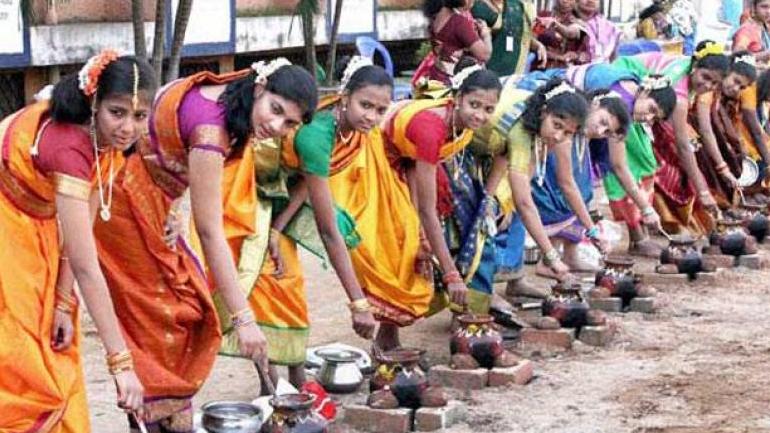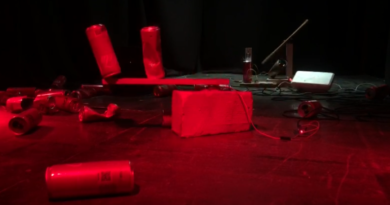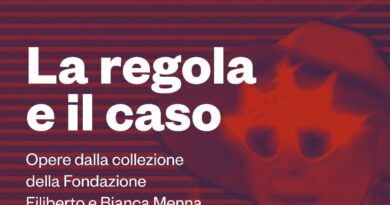Multiple journeys from white void – Viaggi dal linguaggio tamil all’arena internazionale
Original version (follow italian version)
Dear Italian literary readers,
I am happy that I’ve got a god-sent opportunity given to none in my region.
For this rare chance, I, on behalf of the over 2,000-year-old Tamil language, convey my heart-felt thanks to the editor and the editorial board of Rivista Milena!
The soulful kinship between Tamil and Italian can be understood by discerning the similarities between Dante Alighieri’s ‘Divine Comedy’ (1320 AD) and Thiruvallurvar’s ‘Thirukkural’ (4th century AD), both revolving around the concepts of heaven and hell, god and devil and the good and the bad. In fact, the ‘Thirukkural’ couplets look like a forerunner to the Japanese Zen poetry. I am to share with you a new outlook based on the boundless global literary streams, putting forward the intimate relationship between our Tamil art, culture and life and the Italian values. All through this week, the Tamil festival of ‘Thai Pongal’ of hereditary glory is being celebrated with much fanfare and fabulous enthusiasm.
Our Tamils are celebrating this festival for the past four days.
The first day is called the day of ‘Sankaranthi’ or the “Day of ‘Poola poo’.
Our lifestyle being agrarian, the land personified as a deity is worshipped with heaps of flower called ‘poola poo’. On this day, old things and garments would be consigned to flames and new things and new garments bought. This day is described as follows in our ancient Tamil work ‘Nannool Choothram’: “The old are out and the new in.”
The second day is celebrated as ‘Thai Pongal’, a hereditary festival. Pongal is cooked and offered to the Sun as a thanks-giving ceremony. People wearing new garments pour new rice, sugar, milk and ghee into a new pot and cook a delicious food known as ‘pongal’ and offer it as a sacrificial food to the Sun. Then they eat it amid groups gleefully.
The third day is called ‘maattupongal’ meant for cows. It is celebrated as a thanks-giving festival for the cows which are helpful and useful to the farmers during their agricultural operations. On this day, the martial sport known as ‘Jallikattu’ is conducted, in which bulls with horns sharpened are let loose in the arena and the valiant youths are on the prowl to tame them; that is, they literally take the bulls by the horns. It is a Tamil’s ancestral sport of valour, causing heavy casualties.
It is a sport more horrible than the Spanish bull-fighting which evokes memories of American novelist Ernest Hemingway whose non-fiction ‘Death in the Afternoon’, containing the features of bull-fighting, puts forward visions of life and death over the sport. He delineates the martial sport in such a way that life takes on aesthetic colours of horror. This is a mad laughter of man-animal war! The laughter turns more beastly and brighter on the horns of bulls bouncing savagely into the arena in our Tamil writer C. S. Chellappa’s novel ‘Vaadivasal’ (The title means the gate to the enclosure in which the bull-fighting happens). The fourth day is celebrated as ‘kaanum Pongal.’ On this day, people worship their ancestors at their tombstones which are known in Tamil as ‘Nadukal’ (planted stone).
This ‘Nadukal’, which is almost synonymous with tombstone, contains the ashes of the mortal remains of their ancestors and is worshipped as the inanimate forms of the once-living people. At this juncture, we can’t help recalling the Stonehenge Riverside Project, 2007, which holds a hypothesis that Stonehenge, a pre-historic monument in Wiltshire in England, reputedly dating back to 3,000 or 2000 BC, must have been tombstones. Our Tamil language feels joyous when I share with you on this historic day the message about my plan to write a regular column in this esteemed magazine.
I would like to dedicate this column to the Italian stalwarts in general, and Italo Calvino, in particular, who have created in the Italian youth a mindset that sets out to appreciate and analyze the standard literature of other languages too.
Gouthama Siddarthan
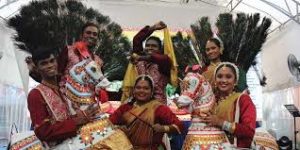
Cari lettori italiani, sono felice di avere avuto una preziosa opportunità mai offerta a nessuno della mia regione. Per questa rara opportunità, a nome degli oltre 2.000 anni di lingua tamil, ringrazio di cuore l’editore e il comitato editoriale di Rivista Milena.
La parentela spirituale tra tamil e italiani può essere compresa riconoscendo le affinità tra la Divina Commedia di Dante Alighieri (1320 d.C.) e il Thirukkural di Thiruvallurvar (quarto secolo d.C.), entrambi ruotanti intorno ai concetti di Paradiso e Inferno, Dio e Diavolo e il bene e il male. Infatti, i distici del Thirukkural sembrano precorrere la poesia zen giapponese.
Sono qui per condividere con voi un nuovo punto di vista basato sulle illimitate correnti della letteratura mondiale, presentando l’intima relazione che intercorre tra la nostra arte, cultura e vita Tamil e i valori italiani. Per tutta questa settimana il festival tamil di gloria tradizionale Thai Pongal sta venendo celebrato con molte fanfare e favoloso entusiasmo. Il nostro popolo festeggia questo festival da quattro giorni.
Il primo giorno è chiamato il giorno di Sankaranthi o Giorno di Poola poo.
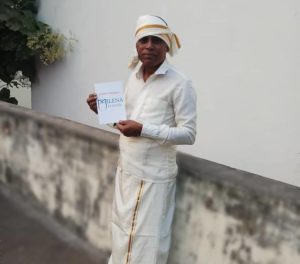 Essendo il nostro stile di vita di tipo agrario, la Terra personificata come divinità è adorata con cumuli di fiori chiamati ‘poola poo’. In questo giorno, le cose e gli abiti vecchi venivano dati alle fiamme per poi comprare oggetti e vestiti nuovi. Questa giornata viene descritta come segue nella nostra antica opera tamil Nannool Choothram: “il vecchio è fuori e il nuovo dentro”.
Essendo il nostro stile di vita di tipo agrario, la Terra personificata come divinità è adorata con cumuli di fiori chiamati ‘poola poo’. In questo giorno, le cose e gli abiti vecchi venivano dati alle fiamme per poi comprare oggetti e vestiti nuovi. Questa giornata viene descritta come segue nella nostra antica opera tamil Nannool Choothram: “il vecchio è fuori e il nuovo dentro”.
Il secondo giorno viene celebrato come Thai Pongal, una festa tradizionale. Come cerimonia di ringraziamento viene cucinato e offerto al sole il pongal. Le persone vestite in abiti nuovi versano riso fresco, zucchero, latte e ghee (burro chiarificato, ndr) in una pentola mai usata prima per cucinare un delizioso cibo conosciuto appunto come pongal e lo offrono come cibo sacrificale al sole. Poi lo mangiano allegramente in folti raggruppamenti.
Il terzo giorno dedicato alle mucche si chiama maattupongal. Viene celebrato come una festa di ringraziamento per i bovini che sono servizievoli e utili agli allevatori durante le loro attività agricole. In questo giorno si pratica lo sport marziale conosciuto come Jallikattu, in cui tori dalle corna affilate vengono lasciati liberi nell’arena e dei giovani coraggiosi tendono agguati per domarli, cioè prendono letteralmente i tori per le corna. Questa pratica che causa pesanti perdite di vite umane ha un valore ancestrale per i tamil.
Si tratta di uno sport più orribile della corrida spagnola, evocata dai ricordi del romanziere americano Ernest Hemingway, il cui testo Death in the Afternoon, illustrando le sue caratteristiche, propone visioni di vita e di morte su questo sport. Hemingway delinea lo sport marziale in modo tale che la vita assuma i colori estetici dell’orrore. La risata folle di una guerra uomo-animale! La risata diventa più bestiale e più luminosa sulle corna dei tori che rimbalzano selvaggiamente nell’arena nel romanzo del nostro scrittore tamil C. S. Chellappa Vaadivasal (Il titolo significa “il cancello del recinto in cui si svolge la corrida dei tori”).
Il quarto giorno è celebrato come kaanum Pongal. In questo giorno la gente venera i propri antenati presso i loro sepolcri che sono conosciuti in tamil come Nadukal (pietre interrate). A questo punto, non possiamo fare a meno di ricordare lo Stonehenge Riverside Project, 2007, che sostiene l’ipotesi che Stonehenge, un monumento preistorico nel Wiltshire in Inghilterra, che si ritiene risalga a 3.000 o 2000 a.C., dovesse essere una pietra tombale. La nostra lingua tamil gioisce dal momento che condivido con voi in questo giorno speciale il mio proposito di scrivere una rubrica regolare in questa stimata rivista.
Vorrei dedicare questa pagine alle personalità italiane in generale, e, in particolare, alla figura di Italo Calvino, che hanno creato nei giovani italiani una forma mentis indirizzata ad apprezzare e analizzare anche la letteratura di altre lingue.
(Traduzione a cura di Fabio Lastrucci)

